Steinway & Sons Piano Factory Tour
History and Tour of the Steinway & Sons Piano Factory in Astoria NYC
 January 13 & 22, 2009 / Steinway & Sons Piano Factory History / NYC Neighborhoods & History NYC / Gotham Buzz NYC.
January 13 & 22, 2009 / Steinway & Sons Piano Factory History / NYC Neighborhoods & History NYC / Gotham Buzz NYC.
I had the opportunity to take a wonderful trip back in time without even leaving the borough. I traveled through a time warp, back into 19th century American, when technology was merging with craftsmanship to create the foundations of the modern world we lived in throughout the better part of the 20th century. In 1875 Steinway & Sons bought 400 acres of land in what used to be Long Island City prior to its merger with Manhattan and Brooklyn to form New York City. The factory is located at the northern tip of Astoria Queens, as one would guess, near Steinway Street. Tours are given weekly throughout the school year but cameras are not allowed.
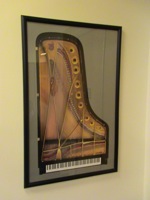 Invention Of The Piano
Invention Of The Piano
We started the tour in an upstairs conference room where there’s a plaque showing the piano was invented in 1711 by Bartholomew Cristofori [d. 1731]. He modified the plucking of strings, as is done by the harpsichord, to create the piano, which strikes the strings. The piano is both a percussion [striking] and stringed instrument.
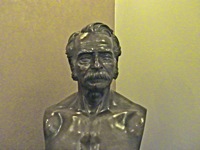 German Furniture Maker Steinway & Sons
German Furniture Maker Steinway & Sons
Heinrich Steinway, the company’s founder was born in Germany. He grew up in the furniture making business and he began applying those skills to piano making in the early 1800’s. In 1849, one of his sons came to America, and a year later most of the rest of the family followed.
Click here to read the rest of our story, including photos of the Steinway Factory History & Tours in NYC.
Steinway & Sons Piano Factory Tour
History and Tour of the Steinway & Sons Piano Factory in Astoria NYC
January 13 & 22, 2009 / Steinway & Sons Piano Factory History / NYC Neighborhoods & History NYC / Gotham Buzz NYC. Continued.

Rare Early Steinway Piano - In Astoria
At the Steinway & Sons piano factory in Astoria they have an 1836 piano that was built in Germany at the first Steinway piano factory. This rare piano was made markedly different from how pianos are made at the factory today.
Steinway & Sons – Technologists & Marketers
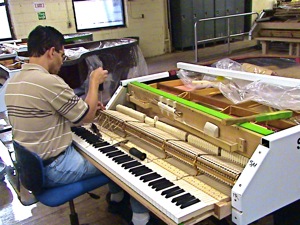 The family migrated to the U.S. in early 1850’s. By the 1870’s their fortunes began to soar. One of the sons, C.F. Theodore Steinway, developed a series of inventions relating to the piano that began to separate the quality of the Steinway product from its competitors. He collaborated with a German physicist and acoustician to refine how the piano created tonal quality.
The family migrated to the U.S. in early 1850’s. By the 1870’s their fortunes began to soar. One of the sons, C.F. Theodore Steinway, developed a series of inventions relating to the piano that began to separate the quality of the Steinway product from its competitors. He collaborated with a German physicist and acoustician to refine how the piano created tonal quality.
William Steinway, Theodore’s brother, added to the Steinway legend by engineering celebrity sales, obtained celebrity endorsements and arranged celebrity events to build upon the Steinway name. To this end William invited European classical pianists to perform on their pianos. And in 1890 he created Steinway Hall, which was a forerunner to Carnegie Hall.
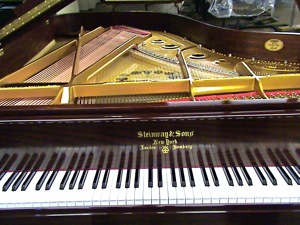
The Second Steinway Hall
The second Steinway Hall, which was used more as a retail showroom and concert piano storage area, was built in 1925 and is still functioning today. It’s worth noting that it is once again owned by Steinway & Sons as a marketing / sales and promotional place, where the greatest musicians in the world come to shop for Steinway & Sons pianos. The building is located just across the street from Carnegie Hall, and both buildings are landmarked.
19th Century Craftsmanship Continues To This Day
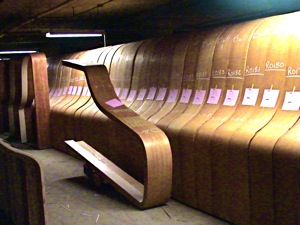 Steinway pianos are, in many respects, made by hand in this factory which employs about 600 people and produces in the neighborhood of two thousand plus pianos per year. During the tour I was struck by the simplicity of the machinery used, as most of it would have been available over a century ago. The men who make these pianos are craftsmen rather than factory workers.
Steinway pianos are, in many respects, made by hand in this factory which employs about 600 people and produces in the neighborhood of two thousand plus pianos per year. During the tour I was struck by the simplicity of the machinery used, as most of it would have been available over a century ago. The men who make these pianos are craftsmen rather than factory workers.
Making A Steinway Piano – Start With The Wood
The factory air is temperature and humidity controlled in order to prevent any warping of the wood components used to create this sensitive musical instrument. The factory is keep very clean and vacuums are everywhere to absorb the sawdust that comes from working the wood.
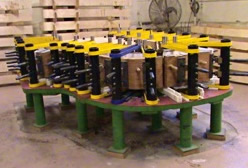 Steinway & Sons Piano Factory - Queens NY
Steinway & Sons Piano Factory - Queens NY
Rock maple wood is cured for various lengths of time to eliminate most of its resin. The long wide planks of wood are then cut and milled into thin layers, sixteen of which are glued together and pressed into a steel frame. In this fashion the piano body is shaped into the smoothe curves of the body of the piano as the glue dries and the wood is cured in a heated and humid environment over the course of ten weeks. During this time the other components for the piano are being built.
Steinway Piano Lid And Moldings
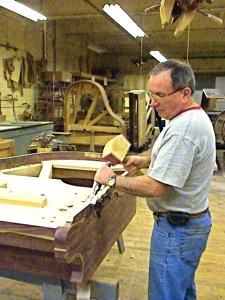 The top of the piano, called the lid, is generally made of populars because it’s a strong straight wood. The lid must be able to sustain thousands of pounds of pressure from the piano vibrations. The moldings are made of walnut. Steam boxes are used to help mold the strong wood to the shapes required to fit onto the curvaceous instrument like a glove.
The top of the piano, called the lid, is generally made of populars because it’s a strong straight wood. The lid must be able to sustain thousands of pounds of pressure from the piano vibrations. The moldings are made of walnut. Steam boxes are used to help mold the strong wood to the shapes required to fit onto the curvaceous instrument like a glove.
Steinway Piano Keys And Hammers - Astoria NY
Ivory is no longer used on the piano keys, since the extinction of elephants became an issue some 30 or so years ago. Today the keys are made with special glass and spruce. The piano hammers are constructed of felt tips, which must conform to the highest quality standards.
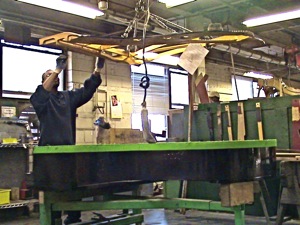
Sound Boards And Harps
The base of the piano includes a sound board and a harp. The harp is made of metal by a Steinway controlled foundry. It generally takes multiple fitting attempts to lay the harp into the sound box to obtain the perfect fit. After the fit, the board is then strung and the piano tuned.
Unique Personality Of Each Steinway Piano
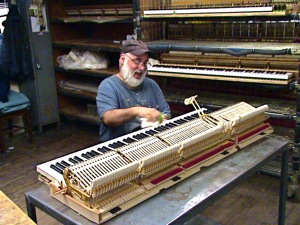 Each piano has its own unique set of characteristics, which the artisans reference to personalities. Somewhere between the fitting and the tuning, the piano is said to ‘get its soul’. The music that comes from a Steinway is the collaboration of the artisans on the shop floor and the musicians in the concert hall.
Each piano has its own unique set of characteristics, which the artisans reference to personalities. Somewhere between the fitting and the tuning, the piano is said to ‘get its soul’. The music that comes from a Steinway is the collaboration of the artisans on the shop floor and the musicians in the concert hall.
Steinway & Sons Pianos – Preferred By Celebrity Musicians
Many of the greats have visited the Steinway & Sons piano factory in Astoria to select their pianos. In fact the factory has a room where client can practice in a room with manageable acoustics that simulate different piano playing environments. The factory estimates that 99% of the American concert pianists and recording stars use Steinways.
Steinway & Sons Pianos – Costs / Value & Special Editions
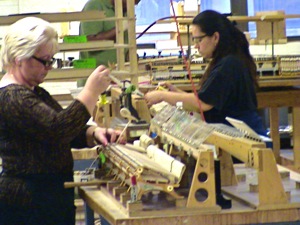 Steinway & Sons produce special editions that may have unique characteristics in the trim, shape, color and more. A Steinway piano can cost up to a half million [for a special edition] but they typically run from the low $40,000’s to the low $100,000’s.
Steinway & Sons produce special editions that may have unique characteristics in the trim, shape, color and more. A Steinway piano can cost up to a half million [for a special edition] but they typically run from the low $40,000’s to the low $100,000’s.
That said the Steinway website indicates that these instruments retain and in fact appreciate in value over time [based on historical trends]. Given that the factory produces only 2,000 plus per year, and by many measures Steinways are custom made, and they are considered by the best musicians to be the best, they seem to have all the properties that makes an item a collectible.
The Steinways exited the business in 1972, but their name lives on in the brand they created. The name had such cache that while Henry Steinway was still alive, he used to randomly come into the factory to autograph a few pianos before they shipped.
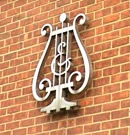
Sources & Thanks - Steinway Piano Factory Tour NYC
My thanks to Marisa Berman of the Queens Historical Society, Bob Singleton of The Greater Astoria Historical Society and Loretta Russo of Steinway & Sons. For tours contact the Greater Astoria Historical Society or The Steinway & Sons Piano Factory by using the search function below.
NYC Neighborhoods & History - Queens Borough Links
Click on these advertisements for promotions, discounts and coupons by retailers and restaurateurs in Astoria and nearby LIC.
Site Search Tips. 1) For best results, when typing in more than one word, use quotation marks - eg "Astoria Park". 2) Also try either singular or plural words when searching for a specific item such as "gym" or "gyms".
$element(bwcore,insert_search,N)$
$element(adman,groupad,Sectional2 Ad)$
Click the log in link below to create an ID and post an opinion.
Or send this story to a friend by filling in the appropriate box below.














